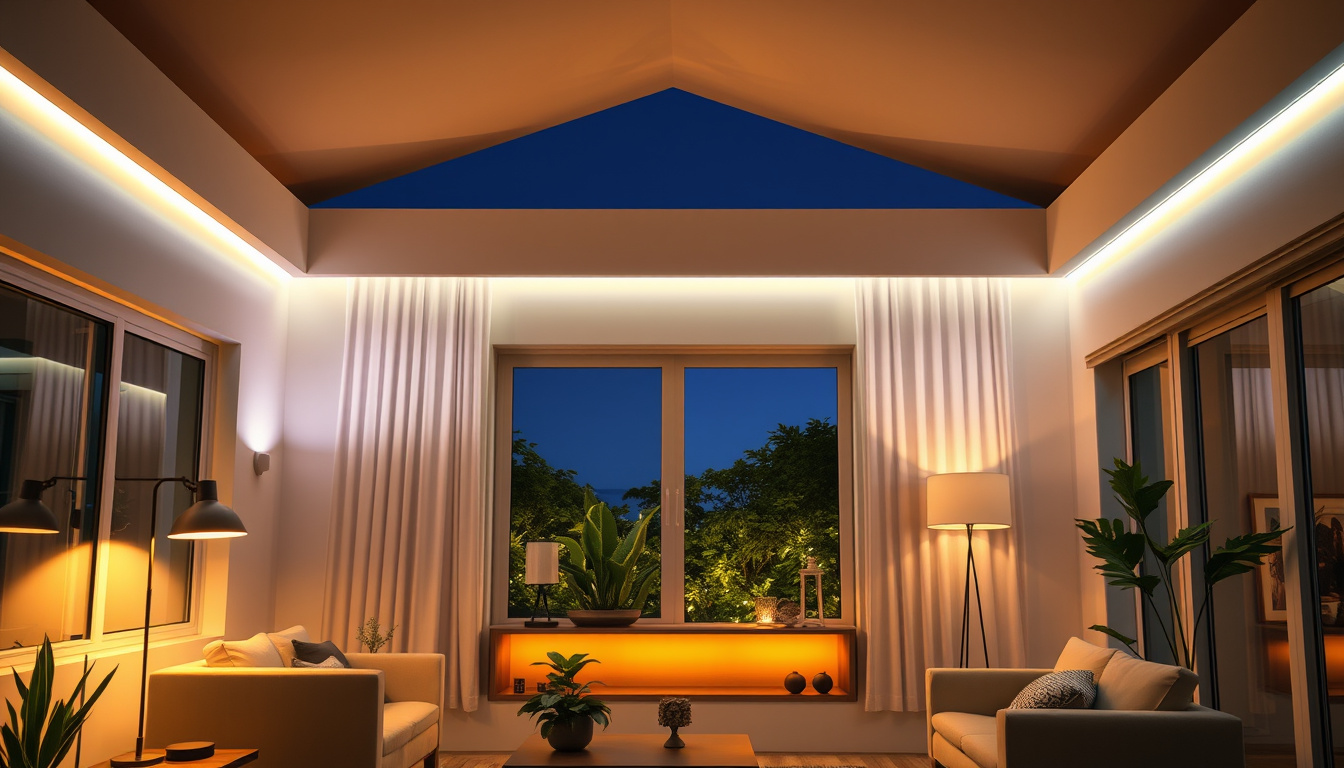In today’s fast-paced world, convenience and security are paramount concerns for homeowners. One of the easiest and most effective ways to enhance these aspects is by automating your lighting. By integrating smart lighting solutions into your home, you can control your lights remotely, set schedules, and improve your home’s security—all at the touch of a button. In this article, we will explore how to automate your lighting for convenience and security, breaking down the basics of smart lighting systems, offering insights on choosing the right automation tools, and discussing how these solutions can bolster your home’s safety.

Key Takeaways
- Smart lighting systems offer a range of automation options for convenience and efficiency.
- Selecting the right tools is crucial for seamless integration of your lighting automation.
- Utilizing timers and motion sensors can greatly enhance the functionality of your lighting system.
- Automated outdoor lighting acts as a deterrent against intruders, boosting your home security.
- Regularly reviewing and updating your automation settings ensures optimal performance and safety.
Understanding the Basics of Smart Lighting Systems
Understanding the Basics of Smart Lighting Systems
In today’s fast-paced world, the integration of technology into our homes has become a norm, and smart lighting systems are at the forefront of this evolution. If you’re looking to enhance your living space while learning how to automate your lighting for convenience and security, there’s no better time to dive into this topic. Smart lighting goes beyond simply turning lights on and off; it encompasses a wide array of functionalities that can significantly improve your lifestyle. These systems can be programmed to adjust according to your daily routine, ensuring that lights are only on when needed, which not only saves energy but also adds a layer of security by mimicking your presence at home. With options like motion sensors, timers, and remote control capabilities, users can easily manage their lighting preferences through a smartphone app or voice commands. Furthermore, smart lighting systems can be integrated with other smart home devices, creating a seamless and connected environment that prioritizes both convenience and safety. Whether you’re interested in automated lighting schedules, color changing options, or enhanced security features, exploring the fundamentals of smart lighting will set you on the path to a more efficient and enjoyable living experience.
Choosing the Right Automation Tools and Techniques
In today’s fast-paced world, learning how to automate your lighting for convenience & security is essential for modern homeowners. With the rise of smart home technology, selecting the right automation tools and techniques can greatly enhance your living experience. Start by assessing your needs: do you want to control your lights remotely, schedule them to turn on and off, or integrate them with security systems? Consider smart light bulbs that connect to your Wi-Fi, allowing you to manage your lighting through an app on your phone or voice control through smart assistants like Amazon Alexa or Google Assistant. Additionally, explore motion sensors and timers that ensure your lights are only on when needed, providing both security and energy savings. By investing in reliable automation tools and applying effective techniques, you can transform your home into a safer and more convenient space.
‘The greatest danger in times of turbulence is not the turbulence; it is to act with yesterday’s logic.’ – Peter Drucker

Enhancing Security with Automated Lighting Solutions
Automating your lighting not only enhances convenience but significantly boosts your home security. When considering how to automate your lighting for convenience & security, one can implement smart lighting systems that can be controlled remotely via smartphones or home automation hubs. These systems allow you to schedule lights to turn on and off at specific times, creating the illusion of an occupied home, which is a deterrent for potential intruders. Additionally, motion-sensor lights can automatically illuminate pathways, entryways, and driveways when someone approaches, ensuring visibility and safety in dark areas. Integrating your lighting with other smart home devices, such as security cameras and alarms, further enhances your home security, allowing for real-time monitoring and alerts. Overall, automating your lighting is a strategic move that complements your home security measures while providing unparalleled convenience.

Leave a Reply